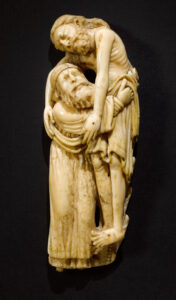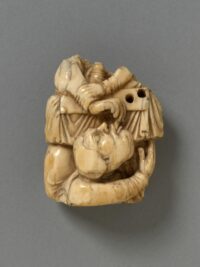
The Romanesque ivory carving depicts Joseph of Arimathea taking the body of Christ down from the cross. The quality of the detail work is exceptionally high.
[Reviewing Committee on the Export of Works of Art and Objects of Cultural Interest]
Member Tim Pestell said:This mediaeval ivory depiction of the Deposition of Christ is a truly remarkable object, both for its early date and its sublimely skilful carving. Delicately observed and showing dignified restraint in its depiction of the dead Christ, it represents one of the finest surviving examples of English Romanesque ivory carving. This rarity means we have much to learn from it, ranging from examining its artistic design and the workshop that produced it, to scientific investigation of the walrus ivory it is made of that might tell us about mediaeval exploitation of the environment, and trade and exchange networks.
There was a brisk trade in walrus ivory in the Middle Ages. Its flesh-like luster, ease of carving and durability made it highly prized as luxury ornamentation, especially of religious objects, and it was readily available from Viking walrus hunters in Scandinavia and Greenland when elephant ivory was scarce. Inspired by Early Medieval Byzantine ivories, northern European carvers created plaques, low relief inlays, book covers, bishops’ croziers followed by increasingly elaborate and three-dimensional tabernacles and altarpieces.

The Judas fragment, which is about half the size of the Deposition and only shows Judas’ head in profile, the hand of Christ and draped garments, was donated to the V&A in 1949. It was because of the Judas fragment that Gertrude Hunt, owner of the Deposition, loaned it to the V&A in 1982. The two were on display together in the museum’s medieval gallery until the owner reclaimed it in 2022 in order to sell it.
* This article was originally published here






No comments:
Post a Comment